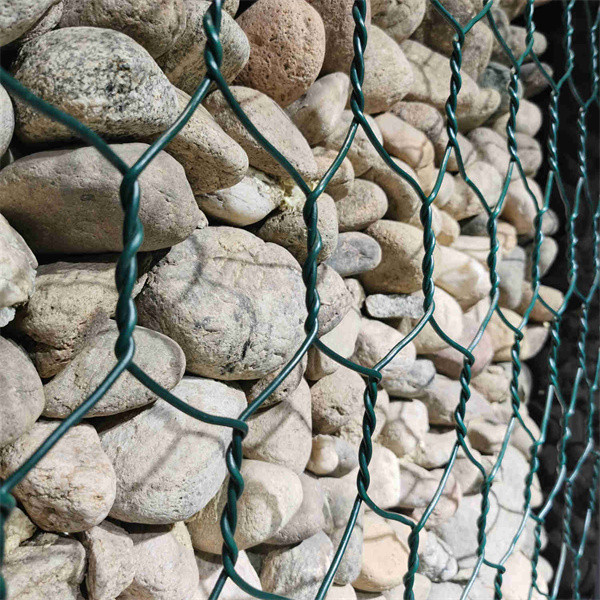Nov . 24, 2024 16:54 Back to list
Use of Gabion Mattresses for Erosion Control and Riverbank Stabilization Techniques
The Versatile Utility of Gabion Mattresses in Engineering and Environmental Protection
Gabion mattresses have emerged as a prominent solution in the fields of civil engineering, environmental protection, and landscape management. These structures, composed of wire mesh containers filled with rocks or other materials, are versatile in their applications and provide numerous benefits in various settings.
Definition and Composition
Gabion mattresses are flat cages made from steel wire mesh, designed to hold materials such as stones, gravel, or other suitable aggregates. The size and configuration of these mattresses can vary significantly depending on the intended use. Typically, they are manufactured in various dimensions, allowing for customization to fit specific project requirements.
Applications in Civil Engineering
One of the primary applications of gabion mattresses is in civil engineering, particularly in the construction of retaining walls, riverbank stabilization, and erosion control. The porous nature of gabion mattresses allows for effective water drainage while providing substantial structural support. When used in riverbank stabilization, they protect the banks from the erosive forces of flowing water, thereby preventing sediment loss and maintaining the integrity of adjacent structures.
In retaining wall applications, gabion mattresses are advantageous because of their flexibility and adaptability to different soil conditions. Engineers often prefer them in scenarios where traditional concrete walls might be too rigid and susceptible to cracking under shifting soil pressures. Gabions offer a more forgiving solution that adjusts to earth movement and can significantly enhance the longevity and durability of the structures.
Environmental Protection and Sustainability
gabion mattress

Gabion mattresses also play a crucial role in environmental protection efforts. As they are often filled with natural materials, they seamlessly blend into natural landscapes. This characteristic helps maintain the aesthetic value of the environment while providing functional benefits. The use of local stones in gabions reduces transportation emissions, promoting sustainability.
Moreover, gabion mattresses contribute to bioengineering practices. By allowing vegetation to grow through the openings in the mesh, they can support the establishment of plant life on slopes and banks, which further enhances erosion control and stabilizes the soil. The plants' root systems interlock with the rocks, creating a natural barrier that not only prevents erosion but also improves the habitat for local wildlife.
Cost-effectiveness and Durability
From a financial perspective, gabion mattresses offer a cost-effective solution compared to traditional methods of erosion control and stabilization. The materials used are often locally sourced, reducing costs related to transportation and procurement. Additionally, installation is often quicker and less labor-intensive than pouring concrete or building conventional walls.
Durability is a hallmark of gabion mattresses. The galvanization of the wire mesh protects it from rust and corrosion, increasing the lifespan of the structure. Even in harsh environmental conditions, gabion mattresses can withstand significant pressure and maintain their structural integrity over time.
Conclusion
In conclusion, gabion mattresses are a valuable asset in modern engineering and environmental management. Their flexibility, durability, and ability to integrate with natural landscapes make them an exceptional choice for various applications, from riverbank stabilization to retaining walls and erosion control. As more engineers and environmentalists recognize the benefits of using gabions, we can anticipate an increasing shift toward sustainable practices that prioritize both functionality and ecological integrity. By investing in gabion technology, we not only address pressing civil engineering challenges but also contribute to the preservation of our environment for future generations.
-
Why PVC Coated Gabion Mattress Is the Best Solution for Long-Term Erosion Control
NewsMay.23,2025
-
Gabion Wire Mesh: The Reinforced Solution for Modern Construction and Landscape Design
NewsMay.23,2025
-
Gabion Wall: The Flexible, Seismic-Resistant Solution for Modern Landscaping and Construction
NewsMay.23,2025
-
Gabion Wall Solutions: The Durable, Decorative, and Affordable Choice for Every Landscape
NewsMay.23,2025
-
Gabion Basket: The Durable and Flexible Alternative to Traditional Retaining Walls
NewsMay.23,2025
-
Gabion Basket: The Proven Solution for Slope Stability and Flood Control
NewsMay.23,2025
-
Versatility of Chain Link Fence Gabion
NewsMay.13,2025






